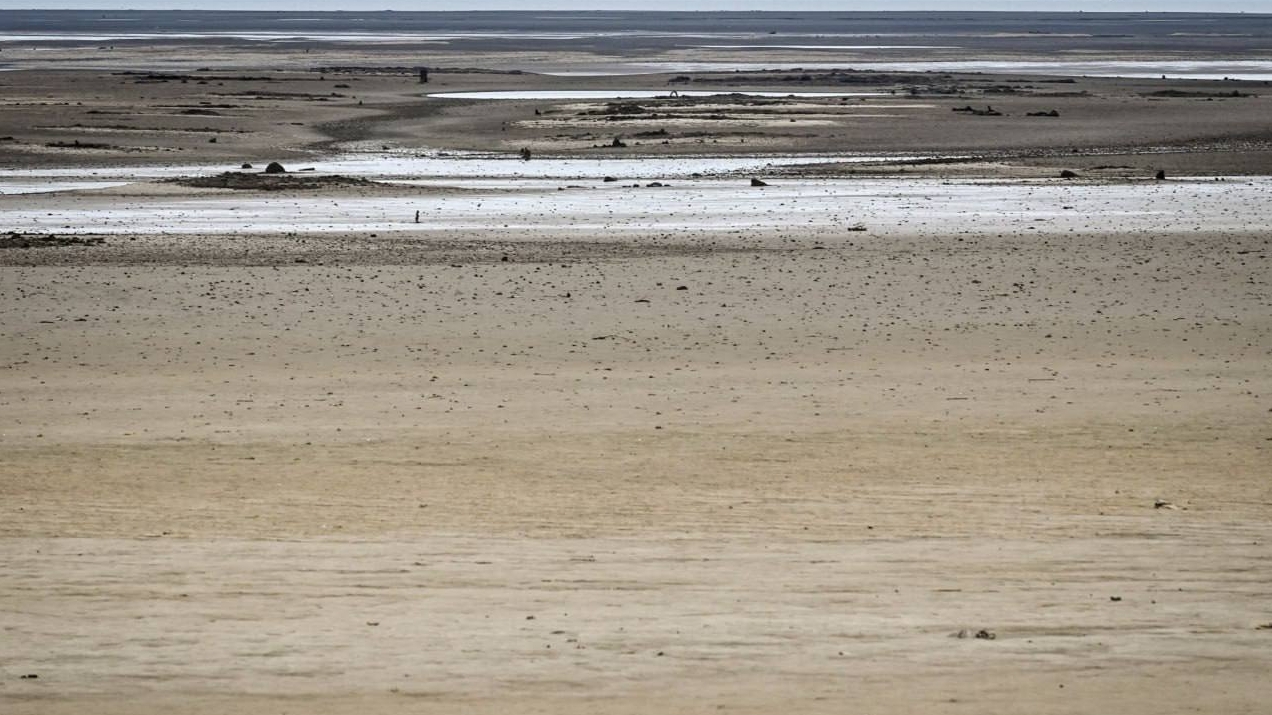The Kakhovsky Reservoir near Nikopol dries up. Inhabitants: this river fed us
Estimated reading time: 3 minutes
This river fed us with fish, moistened the fields with its waters and made us happy when we rested on it. Now the Dnieper is drying up, and we do not know how it will end and how we will live now.

What the Kakhovsky reservoir looks like after the dam is blown up
This river fed us with fish, moistened the fields with its waters and made us happy when we rested on it. Now the Dnieper is drying up and we do not know how it will end and how we will live, say the inhabitants of the Kuszuhum village south of Zaporozhye, where the deserted Kakhovsky Reservoir begins.
The artificial reservoir, stretching for 240 km, was formed by the waters of the Dnieper, enclosed between the dam of the hydroelectric power plant in Zaporozhye and the dam of the power plant in Nova Kakhovka. On June 6, the Russian troops occupying Nova Kakhovka blew up the latter dam, leading to a humanitarian and ecological catastrophe.

The Dnieper near Zaporizhia dries up
“I've lived here all my life, and the water reached this tunnel. I don't want to swear, but you understand what we think about them and what the whole of Ukraine thinks about them. Their authorities should be hanged,” Oleg, who came with his family, is angry at the Russians look at the drying river.
The tunnel the man is talking about runs under the railway tracks. They are located between the village and the former coastline. The old one, i.e. the one before the dam in Nova Kakhovka was blown up. Now the water has receded a good 20 meters towards the old riverbed.
“This river fed us fish, we rested on it, and the water from it was used to water the gardens. Thanks to this, we had vegetables, fruits and a kopeck from selling them. I don't know what will happen now. For now, we still have water to drink, but what will continue – it is not known” – adds Oleg's wife.
An old man with a fishing rod is sitting on the riverbank, who explains that he is fishing for lunch. “I already have two – one more, and I'm going home. Three fish for dinner are enough” – he confesses, adjusting the hearing aid hidden under his gray hair.
To show how much water has been lost in the river, he leads to a stick stuck in the ground covered with shells and still moist. “I was sitting here yesterday. Today I'm fishing five meters further. The water is disappearing very quickly” – he says.
A man on a moped appears on the seashell-lined beach, who also came here with a fishing rod. “I don't want to comment on it, but my heart hurts because I've been coming here since childhood. It's a great misfortune. And the fish were biting beautifully: crucian carp, perch, zander, bream, roach. If the water is still less, there will be no fish” – he explains.
The lack of fish is not the only problem faced by the inhabitants of Kushuum today. The smell of decaying seaweed grows day by day. The smell of rot attracts swarms of flies.
“Usually, vacationers from Zaporozhye come to us for vacation. Because of this stench, they may not be there this year. I don't know what we'll make a living from, I really don't know,” Oleg's wife is afraid.



